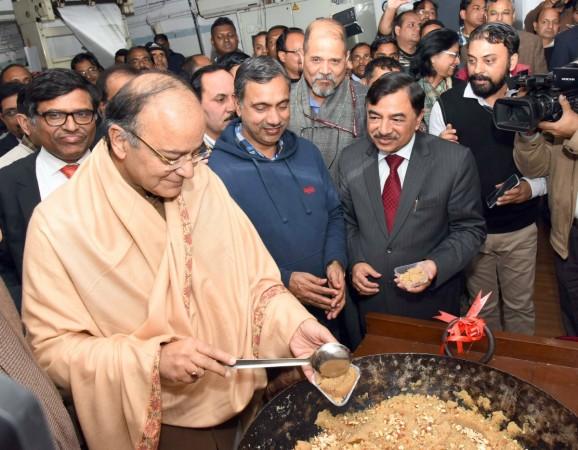
Finance minister Arun Jaitley will present the Union Budget 2018 tomorrow, February 1. This is the first budget after the implementation of Goods and Services Tax (GST) and the last budget of present NDA government.
How's Union Budget 2018 going to be different? Check out these points
The Union Budget of India has many traditions. Now let us take a look at some of them:
- Ahead of the budget, the Finance Minister and other top officials take part in the halwa ceremony. The halwa ceremony is based on the tradition of having something sweet before an auspicious event.
- After the halwa ceremony, all government officials involved in the making of the budget are locked in North Block in a basement without mobile or internet. They are allowed to come out only after the Finance Minister presents the Budget.
- Finance Minister poses with a leather briefcase on the budget day before he heads to make the budget speech. The origin of the tradition of carrying a leather briefcase and maintaining the secrecy around it has been passed down by the British to us'.
- Rail Budget was presented as a separate budget until 2017. Last year, the Rail budget was merged with the Union Budget breaking a 92-year-old tradition.
- The practice of presenting Union Budget on February 1 started in 2017. Before that, the budget used to be presented on the last day of February. The new schedule was implemented to make funds available from the starting of the financial year.
- The Indian Ministry of Finance consists of five departments: Department of Economic Affairs, Department of Expenditure, Department of Revenue, Department of Financial Services, Department of Investment and Public Asset Management. The officials from these departments help in the making of Union Budget.
- The Budget cycle lasts 12 months, from April to March. A Budget Circular will be issued in October or November in the budget cycle, that marks the beginning of the Budget process.
- The Finance Minister presents the Budget in Parliament with the Budget Speech. The budget speech has two parts, Part A and B. While Part A deals with the general economic survey of the country and policy decisions, Part B is about tax proposals.














